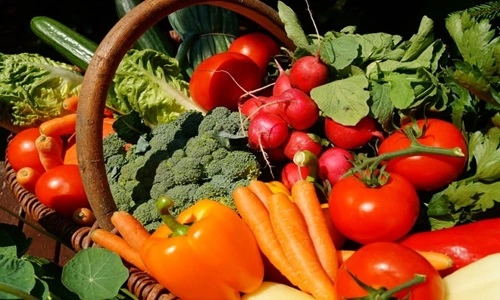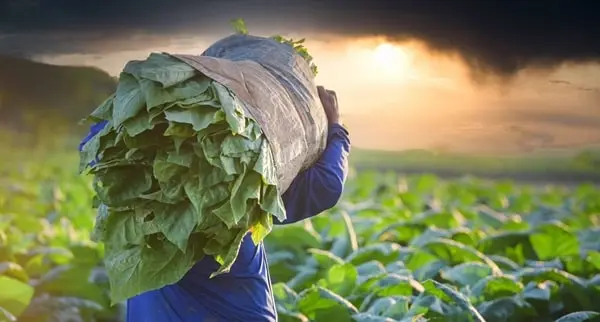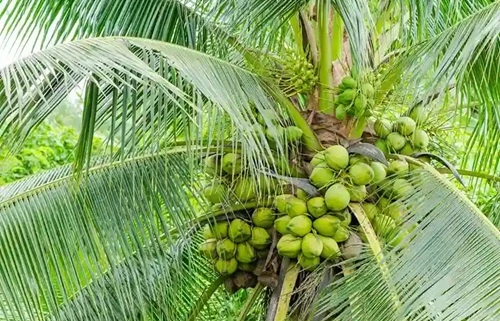We can find the core of Indian agriculture in the cultivation of vegetables which is essential to supply our nation’s vast population with daily nutrition, as well as making the economy grow. In 2024 vegetable growing will be paying outstanding attention, to some States of India. For the moment, let’s move on to the top 5 green leaf states in India this season.

1. Uttar Pradesh:
Uttar Pradesh retains its leading position in vegetable growing because the state is the largest vegetable-producing stage in the country. The county enjoying favorable agro-climatic conditions and strong irrigation facilities alongside a robust infrastructure that supports vegetable farming might be in a better position to make the agricultural process more lasting and lucrative. Districts like Meerut, the Western part, give a boost to vegetable items production from municipality centers. Uttar Pradesh is very good because it provides the majority of the population living there with modern farming and subsidy systems that are both on a state level.
2. West Bengal:
West Bengal is on an ascent to emerge as a prominent actor in the Indian vegetable value chain. Structural diversity, distribution of assets, rich soil, and plenty of water create good conditions for vegetable cultivation in the state. The West Bengal farmers not only use the old style of farming but also introduce newer agricultural practices providing lots of both traditional and modern vegetable crops. The vast areas of Hooghly, Bardhaman and North 24 Parganas are not only witness to home-grown vegetable cultivations but also feed the restaurant business industry and the exporting markets.
3. Maharashtra:
Maharashtra more than any other state can be considered a leader in vegetable production; the state makes use of its rich diverse environment as well as its irrigation infrastructure. The regional areas that are located on the west as well as central parts of the state provide great growing conditions for various vegetables including those planted throughout the year. Examples include the well-known areas of Nashik, Pune, and Ahmednagar which are covered primarily by vegetable production. Maharashtra’s familiarity with Musen and the use of precision, protection of cultivating, and orientation to the market’s ideas loads the veggies crops with the highest quality, contributing to the state’s agricultural economy.
4. Andhra Pradesh:
Andhra Pradesh becoming an important contributor to India’s vegetable production, and stakeholders should identify the impediments to increase productivity and resistance. Varying regions of the state (coastal, semi-arid, and hilly), provide ecosystem support for a multitude types of vegetable crops. In addition to the districts subjects like Krishna, Guntur, and East Godavari, vegetable cultivation activities take place and they receive such projects as irrigation projects and extension services Andhra Pradesh’s focus on the principle of organic farming, crop diversification, and a farmer welfare initiative increases the supply of vegetables nationally and internationally, also meeting the local markets requirements.
5. Telangana:
However, the state of Telangana, notwithstanding, displays colossal vegetable production capabilities, which have been made possible not only by its forward-looking agricultural policies but also, by its investment in infrastructure. The state climate of semiarid nature and good irrigation mechanism provide the facility for round-the-clock vegetable growth. Districts like Medak, Rangareddy, and Karimnagar are vegetable basket areas as far as Telangana is concerned. Through the state government’s priority for technology use, farmer education, and market connections, vegetable farming in Telangana not only increases productivity and profitability but is also a vehicle for rural uplift and food security.
Conclusion:
Small and marginal farmers are the driving force behind India’s vegetable production. A favorable agro-climatic condition also contributes to this. Furthermore, the government provides a variety of policies that support this. The top five vegetable-producing states: Uttar Pradesh, West Bengal, Maharashtra, Andhra Pradesh, and Telangana- bring to the fore the fact that despite the poverty, famines, floods, and overall vulnerability, our agricultural sector is so resilient that it bounces back from adversities and is so efficient that it contributes a lot to the economy. With states decisively focusing on innovation, infrastructure development, and farmers’ well-being these sectors are going to sail smoothly for the future and the goals of meeting the food needs as well as economic prosperity for all shall be fulfilled.
FAQs:
Q1. Which characteristics specifically give impetus to the high production level of such vegetables as tomatoes, cucumbers, peppers, etc. in these states?
Ans: Conditioners that influence life activities, water management facilities, development of infrastructure, and government financial support help to yield high harvests in these states.
Q2. Are there any tests and regulations applied by these states to ensure the farming of these vegetable products with no compromise on quality and safety?
Ans: States impose good standards, good practices for agriculture, and safety regulations to guarantee that for consumers the quality and safety of vegetables is assured.
Q3. Is that technology is used while growing vegetables in these states and to what extent it assisted?
Ans: Technology acceptance by farmers as a perspective. This means precision farming, protected cultivation, and mechanization increase production, efficiency, and sustainability in the vegetable fields.
Related Articles:
- Top 5 Most Tomato Producing States in India
- Top 5 Most Chilli Producing States in India
- Top 5 Most Onion Producing States In India
- Top 5 Most Potato Producing States In India

